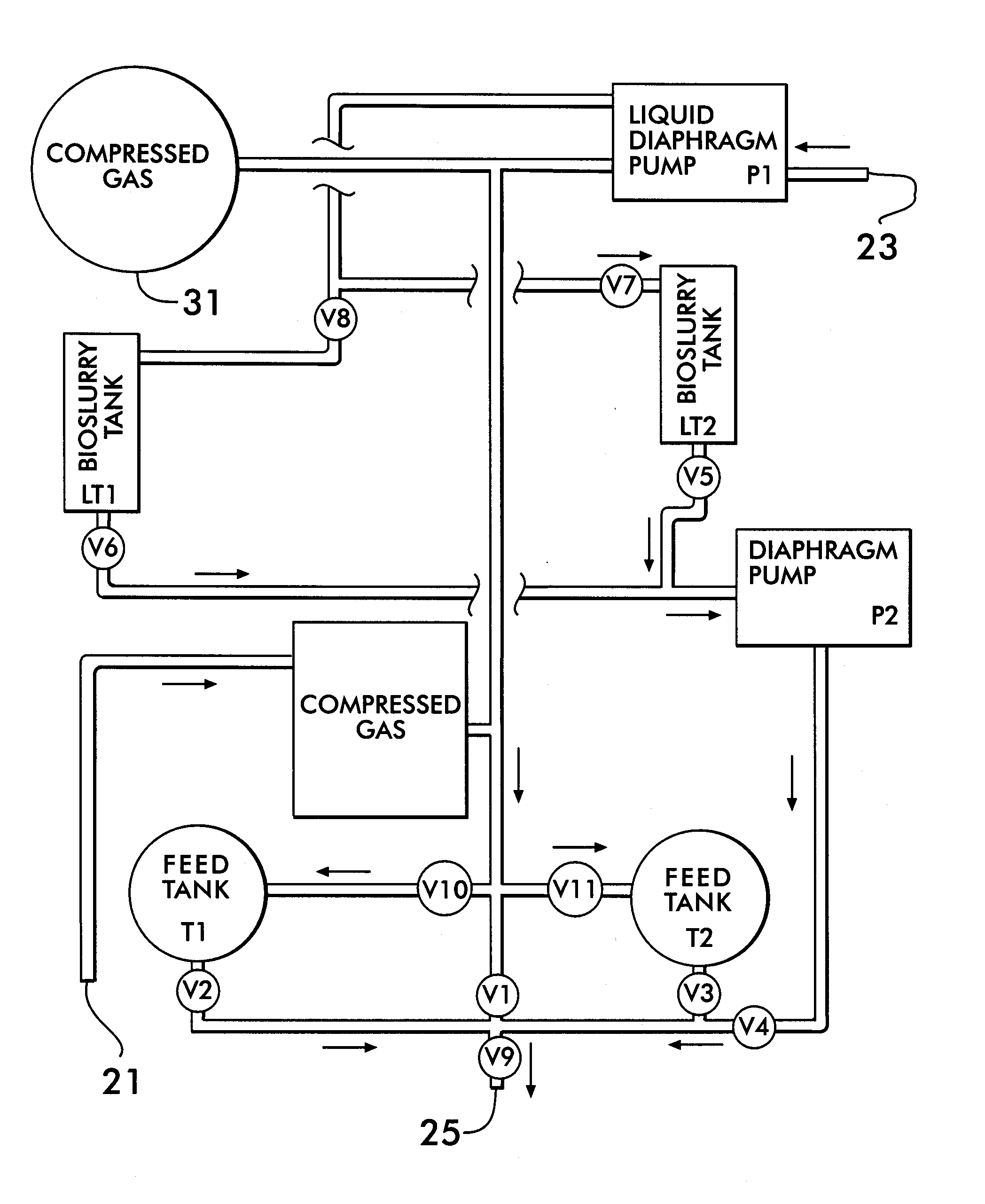Method for accelerated dechlorination of matter
a technology of subsurface matter and accelerated dechlorination, which is applied in the direction of biological water/sewage treatment, water/sludge/sewage treatment, chemistry apparatus and processes, etc. it can solve the problems of complex removal of these contaminants from the environment, long-term, continuing source of contamination, and extensive soil and water damage, so as to accelerate the dechlorination of soil and increase the rate of biological mineralization of solvents , the effect of enhancing the surface oxidation of metal
- Summary
- Abstract
- Description
- Claims
- Application Information
AI Technical Summary
Benefits of technology
Problems solved by technology
Method used
Image
Examples
Embodiment Construction
[0018] According to the preferred embodiment of the invention, the following process and delivery system apparatus is employed. In order to keep an anaerobic environment, nitrogen or carbon dioxide gas is used to propel all injectants into the subsurface. The gas is first injected into the subsurface at a maximum pressure of approximately 175 pounds per square inch until a significant pressure drop is observed at the injection pressure vessel. This process is referred to as delivery pathway development with the intent of opening pathways into the subsurface for the injections. These pathways are believed to be those more permeable pathways along which chlorinated solvents are more likely to have migrated, both in the vadose and saturated zones. Liquid and liquid-entrained injectants are then delivered with pressurized gas to the pathways that are produced during the pathway development.
[0019] Chemical oxygen scavengers, reducing agents such as sodium sulfite, are then injected to r...
PUM
| Property | Measurement | Unit |
|---|---|---|
| pressure | aaaaa | aaaaa |
| pressure | aaaaa | aaaaa |
| pressure | aaaaa | aaaaa |
Abstract
Description
Claims
Application Information
 Login to View More
Login to View More - R&D
- Intellectual Property
- Life Sciences
- Materials
- Tech Scout
- Unparalleled Data Quality
- Higher Quality Content
- 60% Fewer Hallucinations
Browse by: Latest US Patents, China's latest patents, Technical Efficacy Thesaurus, Application Domain, Technology Topic, Popular Technical Reports.
© 2025 PatSnap. All rights reserved.Legal|Privacy policy|Modern Slavery Act Transparency Statement|Sitemap|About US| Contact US: help@patsnap.com

